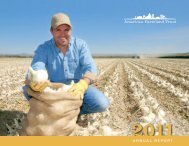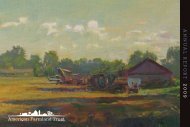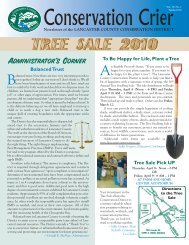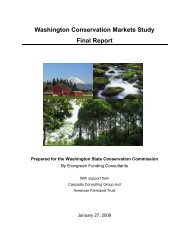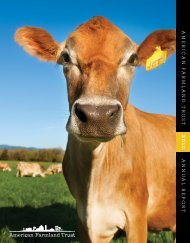Agricultural Landowners Guide Agricultural Landowners Guide
Agricultural Landowners Guide Agricultural Landowners Guide
Agricultural Landowners Guide Agricultural Landowners Guide
You also want an ePaper? Increase the reach of your titles
YUMPU automatically turns print PDFs into web optimized ePapers that Google loves.
Emergency Watershed Protection<br />
Created by the 1996 Farm Bill, the Emergency<br />
Watershed Protection Program (EWP) responds to<br />
emergencies caused by natural disasters. The program<br />
has two components. Under the cost-share component,<br />
the NRCS provides communities or local sponsors with<br />
up to 75 percent of the funds needed to restore the natural<br />
functions of the watersheds. Projects on private<br />
land require a local sponsor from state, county or city<br />
government. Under the EWP’s floodplain easement<br />
component, landowners sell the NRCS a permanent<br />
conservation easement that allows the NRCS to restore<br />
the natural functions of the floodplain. To be eligible<br />
for an EWP easement, land must have been impaired<br />
from flooding during the past 12 months or have a history<br />
of repeated flooding. <strong>Landowners</strong>, with permission<br />
from the NRCS, may continue to use the land for haying,<br />
grazing and managed timber harvests.<br />
For information about the Emergency Watershed<br />
Protection program, contact an NRCS representative at<br />
your local USDA Service Center.<br />
business). The Limited Resource Producer and<br />
Beginning Farmer must self certify they meet the criteria.<br />
Authorized by the 1996 Farm Bill, EQIP is open to<br />
any producer engaged in livestock, forestry or crop production<br />
on eligible land.<br />
EQIP provides technical and financial assistance to producers<br />
to plan, design and install conservation practices<br />
that have been approved for use in the local area.<br />
Examples of such practices include animal waste storage<br />
facilities, grassed waterways, grade stabilization<br />
structures, livestock watering facilities and stream bank<br />
stabilization.<br />
In South Carolina the NRCS offers EQIP cost sharing<br />
on a county-by-county basis. The state Technical<br />
Committee has identified a set of natural resource concerns<br />
that landowners can use EQIP funds to address.<br />
EQIP allocations may vary between counties. While the<br />
South Carolina NRCS accepts applications on a continuous<br />
basis, it evaluates applications and awards contracts<br />
during established ranking periods.<br />
For information about the Environmental Quality<br />
Incentives Program, contact an NRCS representative at<br />
your local USDA Service Center.<br />
Farm Pond Management<br />
The South Carolina Department of Natural Resources<br />
(DNR) can help with the construction and management<br />
of farm ponds. Its Farm Pond Management <strong>Guide</strong><br />
http://www.dnr.state.sc.us/wild/freshfish/img/fishpond.pdf<br />
provides landowners with an overview of issues<br />
surrounding the construction and ongoing productivity<br />
of ponds.<br />
For information, contact the Department of Natural<br />
Resources Wildlife & Freshwater Fisheries Division.<br />
Photo: Clark Surratt<br />
Environmental Quality Incentives Program<br />
The Environmental Quality Incentives Program (EQIP)<br />
pays up to 50 percent of the cost for producers in South<br />
Carolina to implement structural and management<br />
practices on eligible agricultural land. Higher cost-share<br />
percentages may be available to Limited Resource<br />
Producers and Beginning Farmers (


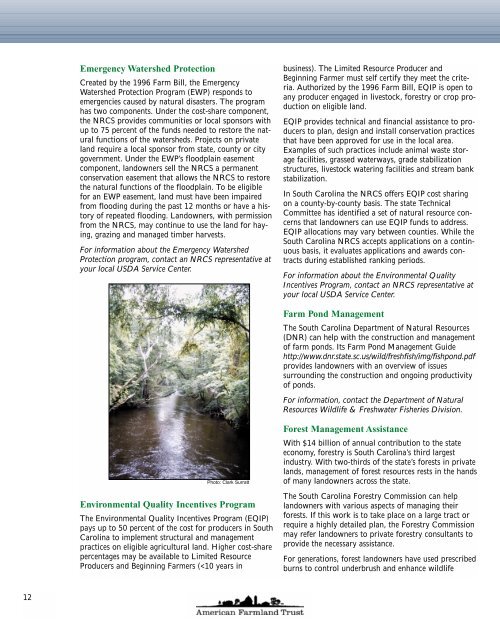
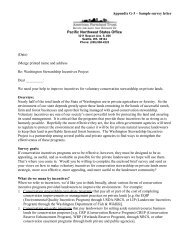


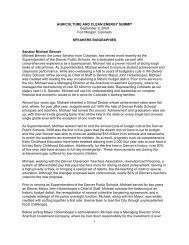
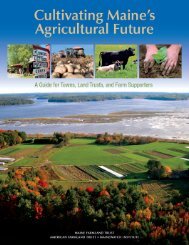
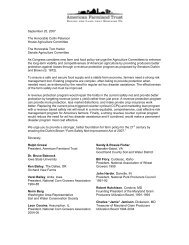
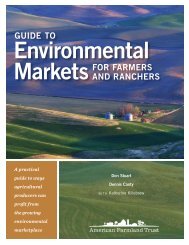
![Farmland by the Numbers [PDF] - American Farmland Trust](https://img.yumpu.com/31549391/1/190x245/farmland-by-the-numbers-pdf-american-farmland-trust.jpg?quality=85)
